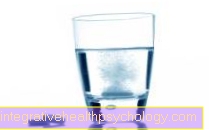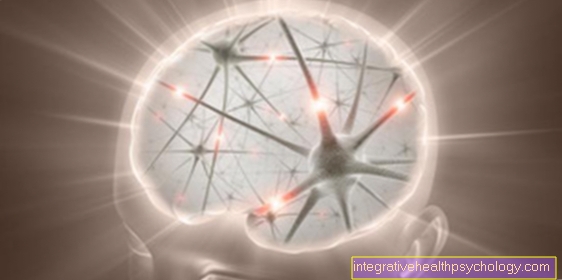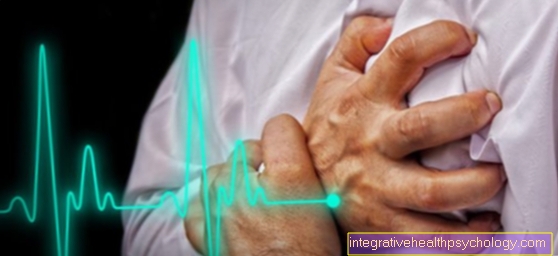Therapy for a food allergy
introduction
Unfortunately, it is not possible to cure food allergies with medication.
However, these particular allergies often go away in adulthood. If you have an existing allergy, the best and most important therapy is to avoid it. Food allergy sufferers should avoid the food they are allergic to if possible. With a slight allergy, small amounts can be tolerated. If you are allergic to types of fruit, it is possible that the allergens can be rendered harmless during cooking.
Nevertheless, it can always happen that patients inadvertently come into contact with the allergen despite great caution. In this case, highly sensitized food allergy sufferers are recommended to carry an emergency kit with them. This usually contains a spray that keeps the airways open in the event of an anaphylactic shock (see there).
In hay fever patients with cross-reactions (see above), desensitization, in which the body is used to increasing amounts of the pollen allergen over a long period of time, can bring healing. This method is rarely used for food allergens, as it is very complex and not always successful there. Experts argue about this possibility. It has also been shown that breastfeeding and a varied diet may reduce the risk of food allergies in children.

Avoidance
The most important measure in the case of a known food allergy is to consistently avoid the triggering allergen. If the allergen is no longer supplied, there are no more allergic symptoms. In the case of some food allergies, such as nut allergies, even small amounts of nut products can lead to a life-threatening allergic reaction, anaphylactic shock.
However, there is one exception to the consistent avoidance of allergens in food allergies: cow's milk allergy occurs relatively frequently in childhood, namely in around 2-3% of infants and toddlers. Here, too, any cow's milk products must first be completely avoided.
In the course of the first few years of life, however, most children develop a tolerance so that the slow increase in cow's milk intake is possible again without any problems. This is not the case with allergies in adulthood - such as the nut allergy. Here, as a rule, a lifelong consequent avoidance of the allergy-triggering products must take place, otherwise life-threatening allergic reactions threaten.
Please also read our article on this Baby's allergy to cow's milk
Desensitization
Classic desensitization uses the principle of regularly exposing the body to the allergen in slowly increasing doses. The aim of the whole is that the body goes through a tolerance development due to the repeated confrontation with the food in low doses, so that the allergy no longer occurs in everyday life after successful therapy, even with normal high doses of the allergen.
The principle of desensitization has so far been used in particular in patients with pollen allergies (hay fever), insect venom allergies and also allergies to animal hair and house dust mites.
In the field of food allergies, there are no established methods of desensitization.
However, there are studies that deal with the topic of desensitization in allergies to nuts, milk and egg white and are showing initial success. Desensitization does not take place in the form of a syringe under the skin but orally, i.e. in tablet form. In the next few years, further studies will always bring new results, so that in the future desensitization will be a conceivable therapy option for food allergies.
You should have this emergency kit with you
People with a food allergy should carry an emergency kit with them. Especially if a severe allergic reaction, also known as anaphylactic shock, has already occurred.
This situation is potentially life-threatening if the appropriate medication is not administered promptly. Therefore, an allergy passport should always be carried along with the emergency kit. In this way, in the event that the person concerned is unconscious, the emergency situation can be recognized on the basis of the allergy pass and acted accordingly.
The most important drug in the emergency kit is adrenaline. It is carried as an emergency pen (emergency pen with application aid). The adrenaline should be injected into the outside of the thigh. It is usually not necessary to remove the skin, so the pen can also be administered through clothing.
In addition to adrenaline, emergency kits for allergy treatment often also contain antihistamines such as fenistil or cetirizine and glucocorticoids such as prednisolone. These drugs are taken as tablets or in the form of drops. In the case of a strong allergic reaction, antihistamines and glucocorticoids are administered intravenously only in the emergency services area.
However, adrenaline is the only emergency medication that works immediately and has an acute life-saving effect. The effect of the other drugs only sets in for hours and is of no major importance in the acute situation. Nonetheless, its use in acute cases, along with the use of adrenaline, is mostly recommended.
These drugs can help
As mentioned above, adrenaline is the drug of choice for treating an acute allergic reaction in a food allergy. Adrenaline causes the blood vessels to narrow and the bronchial muscles to expand, increasing blood pressure and expanding the airways. This is extremely important in anaphylactic shock, as it can often lead to a sharp drop in blood pressure up to shock and a pronounced narrowing of the airways with shortness of breath or complete obstruction of the airways with suffocation.
In addition to adrenaline as a drug for the treatment of an acutely life-threatening allergic reaction, there are drugs from the group of antihistamines and glucocorticoids that are used to treat an allergic reaction. They have an inhibitory effect on the histamine-releasing cells and have anti-inflammatory effects and thus curb symptoms such as rash, itching and runny nose as well as itchy and watery eyes and complaints of the respiratory and gastrointestinal tract.
Both antihistamines and glucocorticoids have a time lag. While antihistamines start to work after minutes to hours, glucocorticoids only work after hours to days and only when taken regularly.



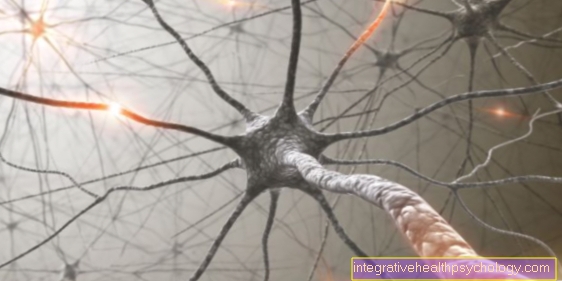







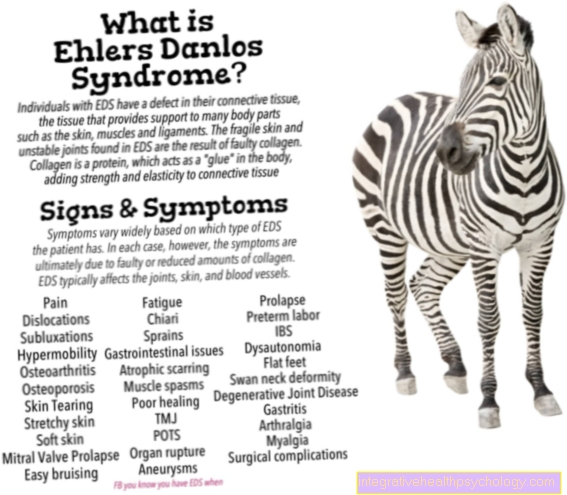




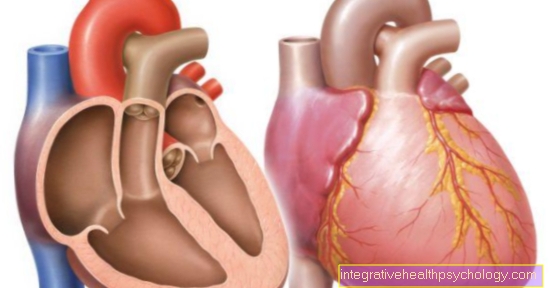


.jpg)


